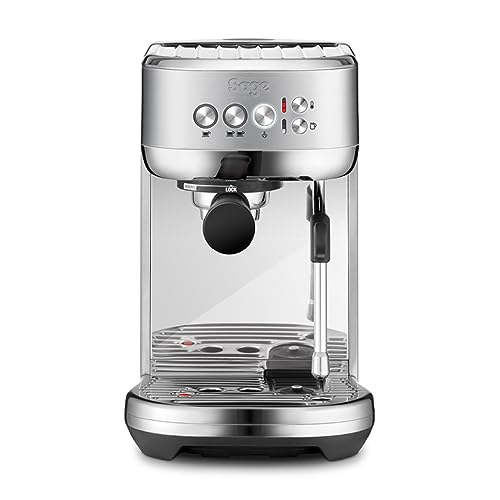How to Make Espresso Machine Coffee
An espresso maker can make delicious cups of coffee, however it requires some extra set-up and upkeep than a regular drip coffee maker. You also need to grind and tamp the beans by yourself.
The key to making espresso is pressure. Here's how an espresso maker operates: a heating device is used to heat water to a suitable temperature, and then pushes it through the grounds and out the spouts.
Temperature
Espresso is created by forcing hot water under pressure through finely ground coffee beans. The temperature of the water is essential to the quality of the final shot. Low temperatures lead to less extraction of the essential flavor compounds. High temperatures can cause excessive extraction, which could cause bitter or burnt taste.
The ideal temperature for espresso is between 195 and 205degF. This temperature can be achieved by using a grouphead designed to maintain a constant temperature and stability throughout the process of brewing. The E61 is the most sought-after group head since it provides temperature stabilty, pre-infusion capability and lever control.
It is crucial to take into account the temperature when you adjust your espresso machine to different roasts or brew ratios. This can impact the extraction yield as well as the crema. The optimal temperature will depend on the specific roast and bean however, the general rule is that lighter roasts and greater ratios of brews require higher temperatures than darker roasts and lower brew ratios. A good thermocouple is also essential for maintaining the same temperature.
Pressure
When brewing, espresso machine coffee is pushed through finely ground coffee grounds that have been put through a tamper. This triggers chemical reactions that remove flavors, oils and other soluble ingredients. The drink that is produced is typically richer and more flavorful.
The ideal espresso machine pressure is nine bars of pressure which is equal to the atmospheric pressure at sea level. This is because it is at this pressure that the coffee bean's soluble components are the easiest to extract.
Some espresso machines boast up to 20 bars of pressure. While these machines can reach these pressure levels however, they might not be capable of maintaining the same pressure throughout the extraction.
One bar of pressure is equal to 32 pounds per square inch (PSI) of a car's tire. It's more than four-times the pressure a professional cyclist needs to pump their bicycle tires. Any serious home barista needs to be able control the pressure of their espresso machine to produce consistent espressos.
Water
The water you use to make espresso is one of the most important elements of a great cup of coffee. The right water allows your beans to extract their full potential. However, the wrong water could cause problems such as clogged pipes or even damage to your expensive machine.
The best choice is a natural spring water that is rich in minerals for ideal espresso extraction. This water will enhance the flavor of your espresso without the chalky mineral traces that are found in tap water or bottled waters. This is an excellent alternative to reverse osmosis. It can be too purified and cause issues with flavor.
However, you should never use a water filter that removes excessive minerals from the tap water, as this can also cause extraction and flavor issues. The best option is to purchase a water test kit, which will give you the local average hardness. This can then be used to locate an filtration system that can provide the proper specifications for the water in your espresso machine.
Beans
Most coffee drinkers tend to be involved in the entire process of making espresso. They obsess over a variety of variables, such as temperature, pressure of water and viscosity. If one of these variables is slightly off, the entire shot could taste bad.
The most important element in the matter of espresso is the beans used. Many believe that only certain varieties are suitable for espresso. Although certain beans are appropriate for certain purposes, any roasted coffee bean can be used to make espresso. The main difference between espresso beans and regular coffee beans is that espresso beans are roasted more and tipycally over the second crack which gives them more of a dark appearance and makes them more soluble in water.
The best espresso beans are generally medium roasted or dark roasted, which give the shots that distinctive richness and boldness. Light roasted beans can also be used to make fantastic espresso, particularly when they're pre-ground for ease of use in an espresso maker.
Milk

Espresso and milk are a timeless combination. The combination of espresso and milk is an iconic. It does not only increase energy levels, but it also balances the bitterness of the espresso. This is among the most delicious pairings for food!
When you are choosing an espresso machine capable of making latte or a cappuccino it is important to consider how easy it is to use. Many of the best machines come with a jug for hot or cold milk and steam wand. They also have a portafilter to pull the shot. Some models also come with an integrated grinder as well as a tamper and a frother.
The steam wand needs to be cleaned prior to making use of it for the first time throughout the day (or after each cup of espresso) to eliminate any water that has condensed. great post to read is only 30 seconds, but is essential to keep your machine running smoothly. If you don't flush it, it could result in bitterness and/or a buildup of bacteria that can affect the flavor or smell of your beverage. It's simple to do and should form part of your regular maintenance schedule.
